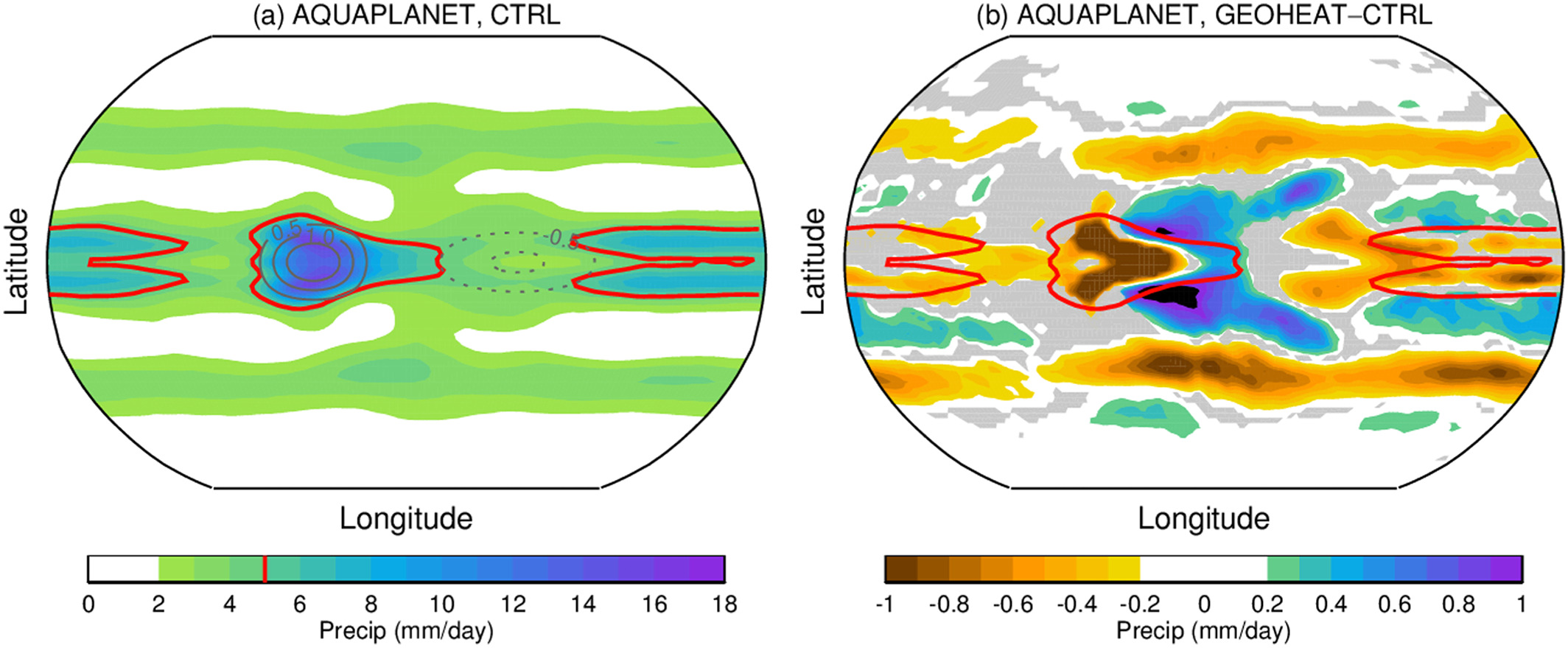An idealized model approach to understanding how solar geoengineering affects precipitation.
Published:
While we are confident that solar geoengineering will reduce the Earth’s surface temperature, its impact on precipitation merits further consideration. Early influential studies showed that solar geoengineering may disrupt the summer monsoons in Africa and Asia (Robock et al. 2008). However, more recent research found that the climate outcome of stratospheric aerosol injection depends on the location (Kravitz et al. 2019), quantity, season (Visioni et al. 2020) of injection, and type of reflectant used (Seeley et al. 2020). It’s not yet clear how these affect precipitation patterns.
As discussed here, the residual atmospheric forcing that results from the combination of the CO2 increase and shortwave reduction can lead to a precipitation reduction (blue below). One can tweak the spectral properties of the reflectant to offset the residual atmospheric forcing and cancel the reduction in precipitation (green below).

The stratospheric heating alone can also cause changes in precipitation. Simpson et al. (2019) analyze simulations where stratospheric aerosols are injected to maintain the surface temperature, latitudinal surface temperature gradient, and interhemispheric difference in an RCP8.5 (high emissions) scenario. They compare them with simulations where the stratospheric heating alone is added to the base climate. Though the changes in precipitation are lower, the pattern of change is strikingly similar to the stratospheric aerosol injection simulation (their figures 6 and 7), especially in the tropics.
To better understand how stratospheric heating alone can affect precipitation, they do a prescribed SST aquaplanet experiment with an idealized zonal asymmetry, and add the same prescribed stratospheric heating perturbation. The figure below shows the control precipitation on the left and the change in precipitation that results from stratospheric heating on the right. The result is noisy but there is a clear dry-get-wetter and wet-get-drier pattern. The authors indicate that more investigations in this idealized context are on the way to get a mechanistic understanding of how stratospheric heating affects precipitation.

Often, people model solar geoengineering by ‘turning down the sun’, but stratospheric heating, along with changes in cloud radiative forcing, and differences in the latitudinal pattern in radiative forcing are key differences between stratospheric aerosol injection and turning down the sun (Visioni et al. 2020). These other differences may also affect precipitation.
I think this is a case where idealized climate modelling can really help us to get a mechanistic understanding of how solar geoengineering (or, more specifically, stratospheric aerosol injection) affects precipitation. In idealized GCM world, we can separate:
- how different top-of-atmosphere forcings (that result from different injection strategies) affect atmospheric circulation and hence precipitation.
- how the spectral properties of the shortwave reduction affect precipitation, by manipulating the spectral bands within which shortwave radiation is reduced.
- how stratospheric heating and changes in cloud radiative forcing that result from the presence of stratospheric aerosols affect precipitation.
Ideally, this will lead us to understand how a given region’s precipitation will be affected by a given injection strategy, and better inform decisionmakers on tradeoffs.

Leave a Comment